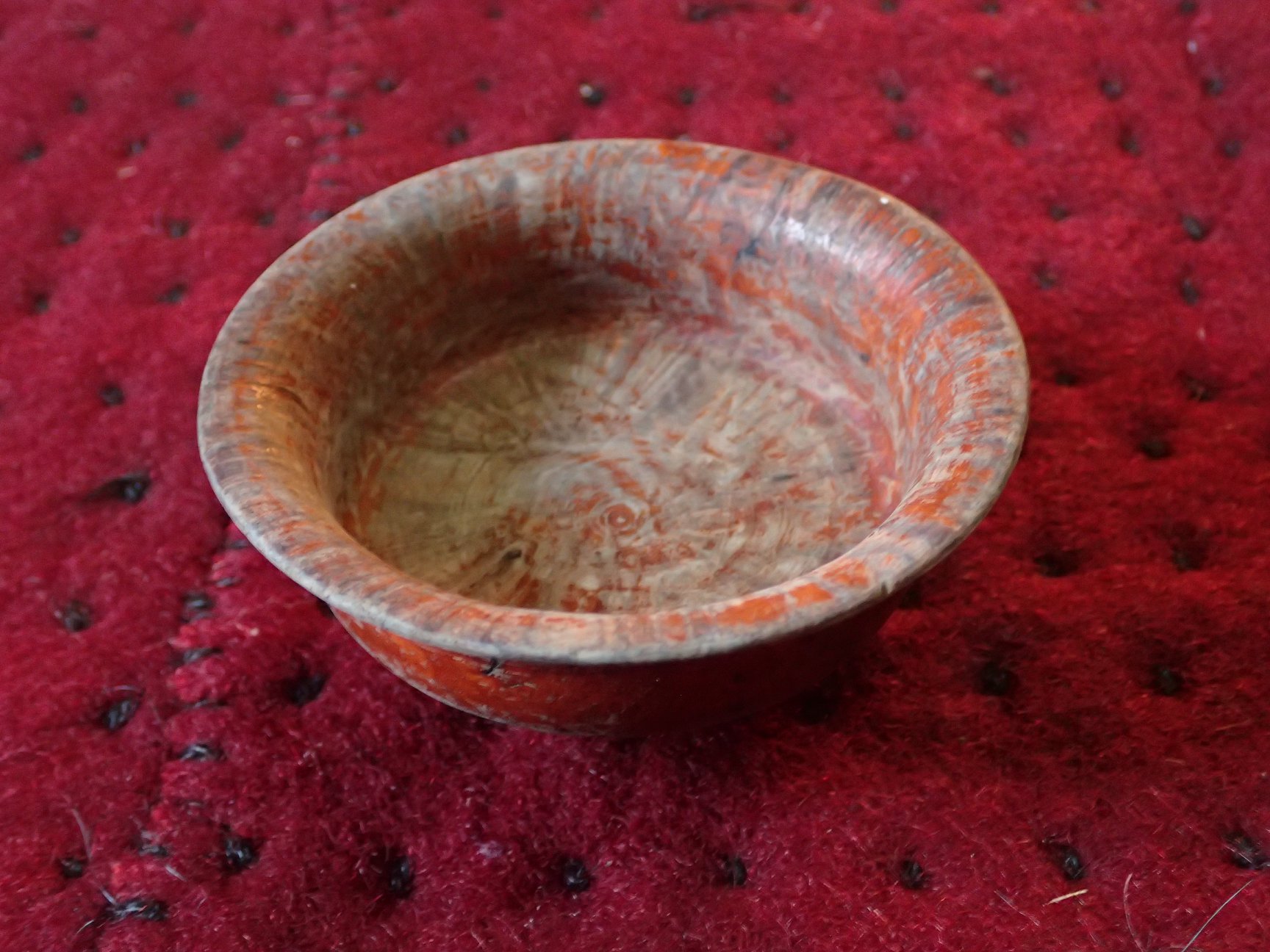Bhutan
by Kenta Takeshige
In Bhutan, lacquer is called Se.
The origin of Bhutanese lacquer art is unknown. It is believed to have come from Tibet. Because the ceramic industry was still rather basic at the time but the country was blessed with forest resources, people used lacquerware made from wood daily. This wood base was shaped by woodturning. They carried their own lacquer-cup on the inside of their traditional dress at chest height and used it when offered tea or alcohol by their hosts. This cup is called Phob locally.


Located in the northeast, Trashi Yangtse is the center of Bhutanese lacquer art. The Traditional Crafts Institute (Zorig Chusum), a governmental craft school, is located there and is working hard to prepare the next generation of artisans.
In Bhutan, the method of collecting lacquer sap is different from that of other Asian countries. There is the method to squeeze sap from young seeds on one hand and the method directly applying the liquid that exudes from the petioles on the other. For each method, different species of trees are used. With those tree species, lacquer sap cannot be obtained from the trunks. A tree species that exudes lacquer sap from the trunk also has been confirmed to exist in Bhutan so there might still be more species of lacquer trees.
Bhutanese lacquer technique
Bhutan's lacquer technique is "Rubbing Lacquer": raw lacquer is rubbed directly by finger. This technique avoids waste as much as possible since the amount of collected lacquer is small. The presence of figures in wood is traditionally valued. Those figures represent auspiciousness. A bright, transparent coating is preferred over an opaque coating to bring out the best in these figures. For the first layer of lacquer, butter is mixed with the raw lacquer that has been squeezed from seeds to reduce the amount of lacquer absorbed by the wood. This will result into a brighter finish. The next layers are also with raw lacquer collected from the seeds but no longer mixed with butter. This procedure is repeated until the appropriate luster appears. For the final finish, high-quality raw lacquer that exudes from the petioles directly is applied and rubbed in.
